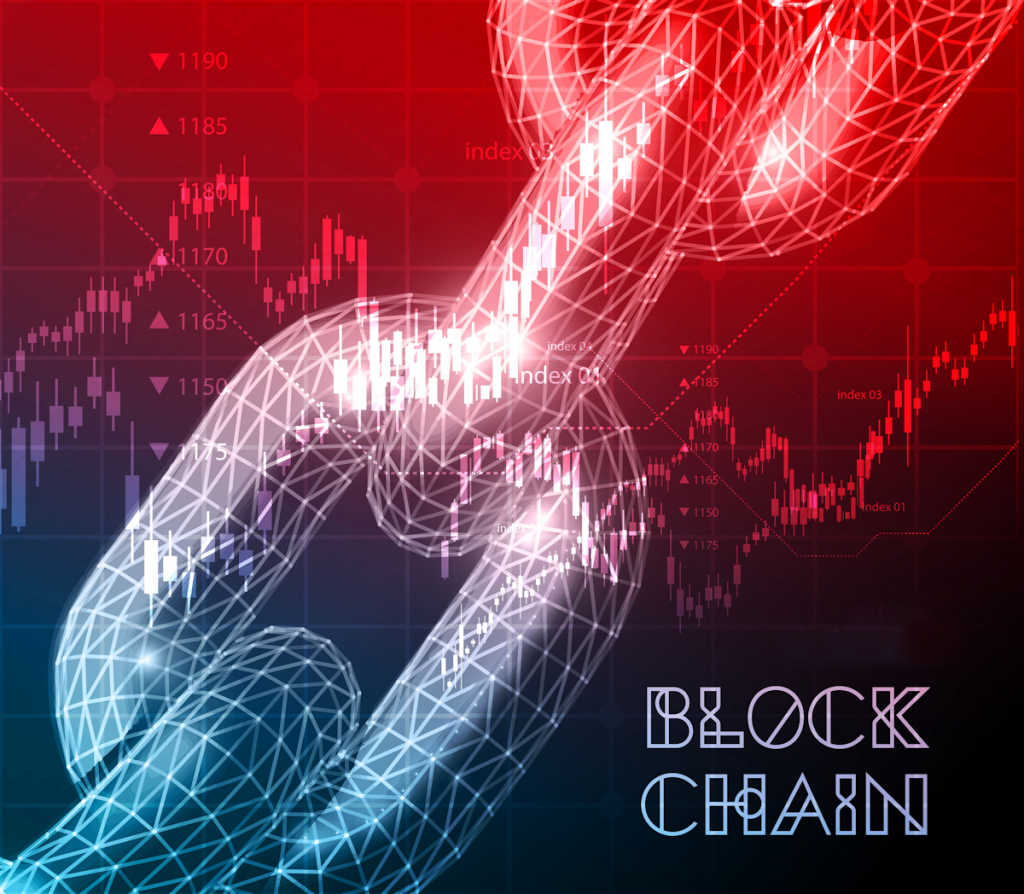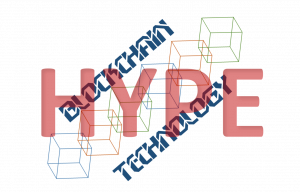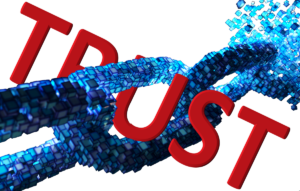Distributed ledger technology (aka blockchain) has many potential uses in supply chain operations. Industry analyst Adrian Gonzalez (@talkinlogistics) writes, “Over the past couple of years, no other technology has generated so much hype, and so much confusion, as blockchain.”[1] He then asks a series of questions: “Why is there so much interest in blockchain? Where are we today with blockchain adoption in supply chain management? Will blockchain replace or coexist with existing network-based platforms?” Good questions all. As for Gonzalez’ first question — why is there so much interest in blockchain — Mark Morley (@MarkMorley), a cloud integration evangelist for OpenText, believes the simplest answer is that blockchain helps deal with complexity. He explains, “Managing today’s supply chains is extraordinarily complex. According to shipping giant, Maersk, one shipment of refrigerated goods from East Africa to Europe can pass through roughly 30 people and organizations, involving more than 200 interactions. Successful supply chain operations rely on robust, transparent and end-to-end communications across geographically dispersed partner ecosystems. Due to the complexity and lack of transparency in current supply chains, the role of blockchain for supply chain management (SCM) is becoming an area of increasing interest.”[2] Andy Stinnes, a partner with Cloud Apps Capital Partners, agrees. He writes, “Blockchain absolutely seems like the technology innovation supply chain has been waiting for.”[3]
Blockchain basics
If you are wondering why Stinnes feels so strongly, he explains, “Supply chains are heavily distributed and heterogeneous. No single company ‘has a supply chain.’ Instead, everyone is a member of a highly complex and ever-evolving supply chain network. In this type of network, you are highly dependent on others: your customers and suppliers, your warehouse and logistics providers, your transport carriers, your brokers and trade banks, your contract manufacturers, your channel partners and distributors. The orchestration of supply chain planning and execution activities across all those partners is paramount, and sharing information effectively is the lubricant that creates a well-oiled supply chain.” Blockchain technology holds the promise to do just that — share information effectively. When Gonzalez asked Arun Samuga, Chief Technology Officer at Elemica, why there is so much hype about blockchain, Samuga answered, “With supply chains being so complex and global today, blockchain comes along and guarantees consensus, immutability and unprecedented levels of security. These three elements are what supply chains need for high levels of reliability and integrity.”
Jack Shaw (@jackshaw), an Innovation and Change Management Strategist, writes, “If you take a very simple system, a relatively confined ecosystem, you would think it would be pretty straightforward for everybody to know who all the players were and what’s going on. But it’s not. In the past, there was a constant reconciliation process. No one had a view of the supply chain as a whole or the ability to understand where their piece fits into it and to optimize the flow of products and materials through the supply chain. Blockchain solves that problem. Blockchain allows you to create a virtual single shared pool of data among all the authorized players in a particular supply chain ecosystem. Within that a shared pool of information, everyone who’s involved can see everything that’s relevant to them and that they are authorized to see as soon as a change takes place.”[4] As a futurist, Shaw goes on to ask, “How do we make the changes in our businesses to take advantage of blockchain technology? What do we think our companies and industries need to look like five to 10 years from now? How are our industries likely to change?” He doesn’t claim to have all the answers; however, he does predict blockchain will play a major role. He explains:
“The very notion of a supply chain is likely to be altered in the future. You can’t really talk about blockchain in isolation, because if you think about the supply chain, and especially the idea that it becomes more and more autonomous, it’s got to include machine learning. It’s got to include IoT. It might even include 3D printing, which could be done onsite. That would change everything completely. We might be able to create the finished product, or at least finished parts and materials to be assembled into the finished products, at the place where those products need to be used or consumed — so we may not even need to transport value-added goods anymore. In the future, the concept of a supply chain will still be in place, but it will be dramatically simplified and significantly changed. If we look instead of five or 10 years down the road, we look 20, to 30, to 50 years down the road, the very notion of what a supply chain is will likely be altered dramatically.“
I’m not sure the supply chain of the future will be “dramatically simplified”; rather, I predict emerging technologies like blockchain and cognitive computing will make it easier for companies to deal with complexity.
Blockchain challenges
Most subject matter experts talk about blockchain’s potential and how it will be used in the future — once some of its challenges have been overcome. The first major challenge is standardization, which impacts interoperability. Shaw explains, “Business still face some outstanding issues with blockchain — for example interoperability among blockchains. There are a number of approaches to how to design blockchains, and it will be important for those blockchains to connect.” He is optimistic standardization and interoperability challenges will “be solved within the next two or three years.” Stinnes explains standardization is only one challenge businesses face when it comes to implementing blockchain technology. “It turns out that before we can even begin to implement blockchain and realize its tremendous value for the supply chain,” he writes, “there are obstacles we must overcome in three key areas: data quality, technology complexity, and adoption model.”
Data quality. Stinnes writes, “Data is scattered everywhere. It’s caged in the silos of each partner’s systems, redundant and in different representations. Everyone is looking at their own ‘truth,’ and data integration between partners is feared like the plague because it is so complex. Collaboration across company boundaries is therefore the undisputed number-one unsolved business problem in supply chain.”
Technology complexity. Stinnes fears a Rube Goldberg solution. He explains, “The cartoonist Rube Goldberg was famous for his drawings depicting complicated gadgets performing simple tasks in convoluted ways. For some applications, blockchain technology might end up being a ‘Rube Goldberg device’ because it’s too complex of a solution for the problem the supply chain is trying to solve.” He adds, “Complexity makes [blockchain systems] horribly difficult to upgrade and maintain. … From a standpoint of practicability, blockchain solutions are best suited for those supply chain problems requiring fairly narrow and well-understood functionality that is not likely to change much over time.” If a solution is working in today’s supply chain, trying to fit it into a blockchain scheme may be a fool’s errand or an expensive waste of resources. The acronym KISS (keep it simple, stupid) comes to mind.
Adoption model. Aleks Larsen (@_alekslarsen), an investments & research expert at Blockchain Capital, explains, “There is no one-size-fits-all solution for blockchains and each distinct combination of designs offers differences in security, privacy, efficiency, flexibility, platform complexity, developer ease-of-use and even political values.”[5] Finding a single blockchain model for supply chain operations may be an unreachable goal.
Concluding thoughts
Shaw concludes, “Visibility in the supply chain is crucial for mitigating business risk and for satisfying consumer expectations for ethical and sustainable business practices. By providing a transparent and immutable record, blockchain has the potential to reshape longstanding processes and practices in nearly every industry — for the benefit of businesses and consumers alike.” Morley adds, “A company successfully implementing blockchain in the supply chain depends on their solution being able to deliver the performance and scalability they require. With the increased technical maturity of blockchain, supply chain development is likely to examine ways to introduce blockchain into operations where it makes the most sense. Transforming the supply chain industry requires blockchain platforms that can build trust and efficiency into a wide range of transactions.” Areas he sees blockchain making the most sense are: supply chain finance; logistics; supplier payments; cold chain traceability; and food safety.
Footnotes
[1] Adrian Gonzalez, “Blockchain In Supply Chain Management,” Talking Logistics, 2 December 2019.
[2] Mark Morley, “Top 5 use cases of Blockchain in the supply chain in 2020,” Opentext Blogs, 11 February 2020.
[3] Andy Stinnes, “Is blockchain perfect for the supply chain?” DC Velocity, 10 February 2020.
[4] Jack Shaw, “How Blockchain Will Help Create the Supply Chain of the Future,” Oracle Supply Chain Management Blog, 1 October 2019.
[5] Aleks Larsen, “A Primer on Blockchain Interoperability,” Blockchain Capital Blog, 20 December 2018.





